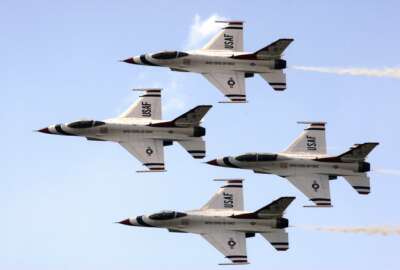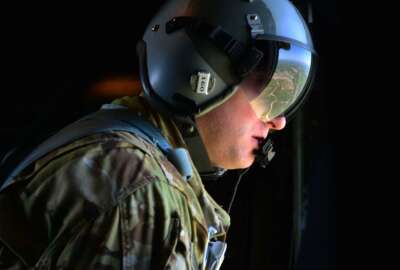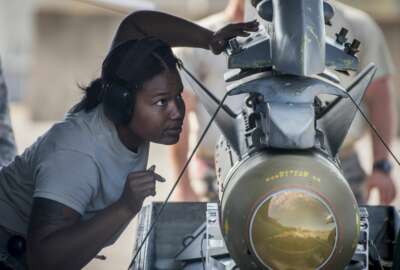
Zombie planes technology may resurrect old F-16s in future
The Air Force may be able to take old planes and turn them into drones.
The Air Force is one step closer to sending zombie planes into combat or on intelligence missions.
Don’t be too afraid, these planes won’t eat your brains.
The Air Force Research Lab (AFRL) successfully completed a two-hour test flight of an airplane it fitted with a robotic pilot on Aug. 9 at Dugway Proving Ground in Utah.
The ROBOpilot program could give new life to old planes that are obsolete or not fit for human flight by turning them into drones.
But the program gives the Air Force the option to have a human pilot take over the controls again too.
“Imagine being able to rapidly and affordably convert a general aviation aircraft, like a Cessna or Piper, into an unmanned aerial vehicle, having it fly a mission autonomously, and then returning it back to its original manned configuration,” said Alok Das, senior scientist with AFRL’s Center for Rapid Innovation. “All of this is achieved without making permanent modifications to the aircraft.”
The program is a collaboration with DZYNE Technologies, a company based out of Irvine, California.
“The system ‘grabs’ the yoke, pushes on the rudders and brakes, controls the throttle, flips the appropriate switches and reads the dashboard gauges the same way a pilot does,” an Aug. 15 release from AFRL states. “At the same time, the system uses sensors, like GPS and an Inertial Measurement Unit, for situational awareness and information gathering. A computer analyzes these details to make decisions on how to best control the flight.”
Engineers remove the pilot seat and install a frame in its place with the equipment, sensors and robot arm that all control the plane.
“This is clearly an area where we agree there is great potential to advance [unmanned aerial] technology,” said Maj. Gen. William Cooley, commander of the Air Force Research Lab, told Federal News Network last year. “As far as technology and the type of things we need to do to build capacity and capability, this is clearly an area of building up autonomous systems that we need to be looking at and we are looking at.”
The Mitchell Institute for Aerospace Studies championed the idea in one of its policy papers and took the idea to the extremes.
“We put out the idea of converting aircraft that are currently in storage simply because cost is everything right now and if you look at those airframes they are certified combat aircraft,” said Douglas Birkey, executive director of the Mitchell Institute.
The policy paper from the institute explains more.
“The Air Force currently has long-term storage at the 309th Aerospace Maintenance and Regeneration Group at Davis-Monthan Air Force Base in Tucson, Arizona,” the policy paper states. “While they may not be the type of aircraft the service would want to send into harm’s way with an airman inside, they could prove exceedingly useful when employed in an unmanned fashion, particularly when teamed to create extended kill chains that increase the survivability of exquisite manned aircraft.”
These planes, which could consist of F-16s, would not be controlled by remote pilots like the MQ-9 or other well-known drones. Rather, the Mitchell Institute envisions a completely autonomous plane that only relies on humans for certain actions.
“You might have humans entering the loop to validate a decision they make or something like that, but they’re not actually flying by way of remote control,” Birkey said.
AFRL isn’t quite there yet, but the two hour flight is a start to using combat aircraft in a whole new way.
The lab developed the system using a direct to phase II small business innovation research contract.
“AFRL and DZYNE designed, built and tested ROBOpilot. Engineers demonstrated the initial concept in a RedBird FMX simulator, a full motion, feature-rich advanced aviation training device,” the AFRL release states. “ROBOpilot successfully completed simulated autonomous takeoffs, mission navigation and landings in both nominal and off-nominal conditions in this Federal Aviation Administration-certified trainer.”
Copyright © 2025 Federal News Network. All rights reserved. This website is not intended for users located within the European Economic Area.
Scott Maucione is a defense reporter for Federal News Network and reports on human capital, workforce and the Defense Department at-large.
Follow @smaucioneWFED
Related Stories






